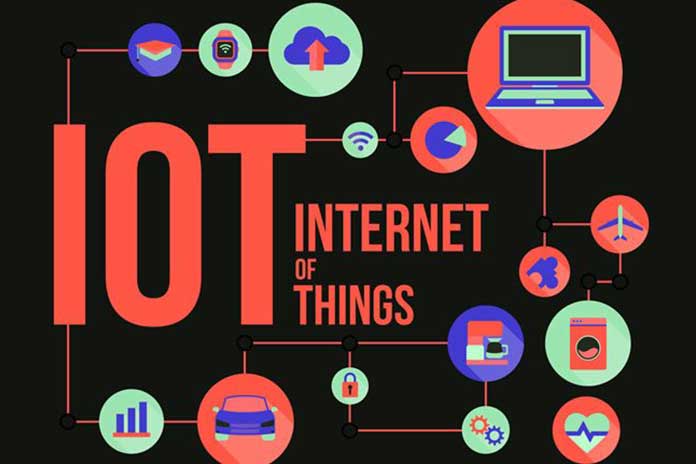An outline of the areas empowered by the Internet of Things arrangements dissemination.
The term Internet of Things (IoT) is progressively utilized as an equivalent for Digital Transformation. Because of IoT stages, items can become ‘shrewd’ and conveyed using empowering advances that permit the trading of information and data between clever articles and the executive’s frameworks utilizing wired or remote organizations and the Internet.
Internet of Things uses different transmission technologies and protocols, which are chosen according to various factors, such as distances between sensors / smart objects and signal collectors, amount of data to be transmitted in the unit of time (bandwidth), delay with data can reach (latency), available means of transmission (frame cables, optical fibers, wireless communications). For data transmission, various communication protocols are used, including TCP / IP, MQTT (Message Queue Telemetry Transport), CoAP (Constrained Application Protocol), and AMQP (Advanced Message Queuing Protocol), OPC-UA, depending on the type of service activated.
Table of Contents
Applications Of IoT Technologies
The main areas of application of the Internet of Things are in contexts where objects can communicate with each other, generating useful information, such as home automation (smart home), intelligent buildings (smart building), monitoring and control in the industrial sector. (smart factory and intelligent logistics), telemedicine (innovative health), smart cities and intelligent mobility, automation of agricultural works (smart agrifood) and the areas of surveillance, security and telemetry (smart metering).
The IoT Market
The IDC study ‘Worldwide Internet of Things Forecast, 2020-2025’ predicts that in 2025 there will be over 55 billion connected objects in the world, generating approximately 80 ZettaBytes (80 billion Terabytes) of data for security, video surveillance and industrial applications IoT. According to McKinsey’s “The Internet of Things: Mapping the value beyond the hype” report, an economic value of 11 trillion dollars a year could be generated by 2025. The Internet of Things market in 2019 reached the value of 6.2 billion euros.
A significant market share comprises intelligent meters, connected cars and services enabled by connected objects. The most significant growth is related to the smart home. Smart cities are also growing, with many projects, intelligent asset management and intelligent agriculture solutions. Over 50% of large companies have found at least one industrial IoT project over the last three years, while only 13% of SMEs have launched initiatives. Mainly limiting adoption is a lack of skills and cultural and technological barriers.
Industrial IoT (IIoT)
The Industrial Internet of Things (IIoT) connects people, products and processes to support digital transformation. Using Industrial IoT platforms, companies connect, monitor, analyze and exploit data using object-centric systems with sensors connected to the network and capable of interacting with each other. The information collected is analyzed and processed, contributing to optimizing business processes. With the IIoT, convergence is achieved between operating technologies (OT, operation technology), applied in the controls of machines and industrial plants, and IT ones.
The Categories Of Most Widespread Applications Of Industrial IoT Technologies Are
Smart Factory
Production progress control, work safety, maintenance, material handling, quality control, waste management. These solutions can provide real-time information on equipment performance and people to simplify and improve business processes and workflows.
Smart Logistics
Traceability/monitoring of the supply chain through RFID (Radio-Frequency Identification) tags and sensors, monitoring the cold chain, safety management in complex logistics centers, fleet management, for example, via GPS / GPRS.
Smart Lifecycle
Improvement of the new product development process and end of life management. IoT allows manufacturing companies to constantly monitor the operation of intelligent products sold, identifying possible malfunctions in time and automatically installing software updates. Furthermore, the analysis of product usage data can allow manufacturers to develop innovative ad hoc services for customers.
There Are Two Main IIoT Market Trends
Servitization
The transition from the sale of related products to the sale of services enabled by the data collected by these products. Third parties can also develop these services and companies producing IoT devices since the data produced by IoT machinery can be sold to actors, even outside the industrial world, interested in providing new services based on use and exploitation. Some data.
In-Thing Purchase
the possibility of using smart objects as a sales channel, enriching connected objects with paid functionality. For example, cameras offer cloud storage, image analysis and alarm services for a subscription fee.
The Evolution Of Transmission Technologies
The growth of the IoT is driven by new communication technologies and services enabled by connected objects. In the world, there are already numerous tests of 5G applications related to the IIoT. Next-generation mobile networks significantly improved the effectiveness of assembly line automation processes and the quality of virtual reality and augmented reality applications that support many production and maintenance tasks.
The Narrow-band Internet of Things is also expanding, consisting of LPWA (Low Power Wide Area) communication networks based on new technologies used in control applications of the territory, safety controls and industrial and environmental monitoring. The IoT satellites could establish themselves as an alternative and complement cellular and wireless terrestrial networks.


